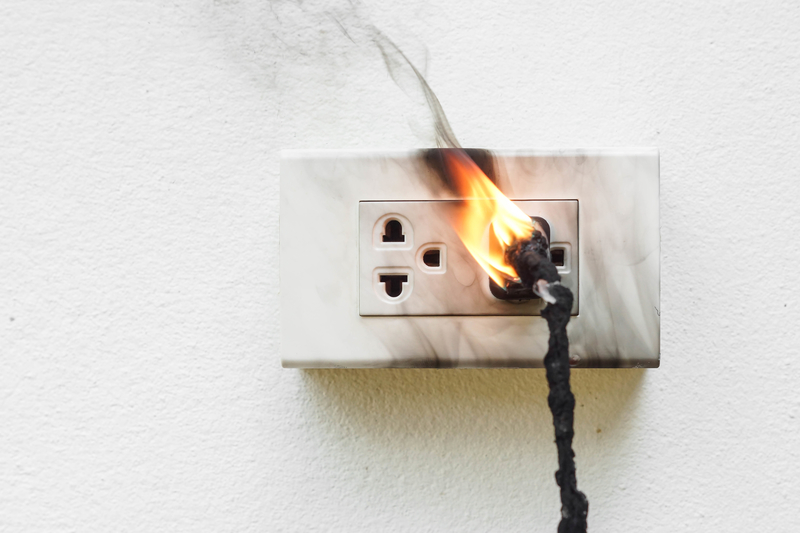Wiring anything beyond a simple light can lead to oversights and mistakes that can kill you.
Avoid these common mistakes!
Poor Support for Outlets and Switches
Mistake: Loose outlet
Loose switches or outlets can look bad, but worse yet, they're dangerous. Loosely connected outlets can move around, causing the wires to loosen from the terminals. Loose wires can arc and overheat, creating a potential fire hazard.
Solution: Add rigid spacers
Fix loose outlets by shimming under the screws to create a tight connection to the box. You can buy special spacers like we show here at home centers and hardware stores. Other options include small washers or a coil of wire wrapped around the screw.
Recessing Boxes Behind the Wall Surface
Mistake: Exposed combustible material
Electrical boxes must be flush to the wall surface if the wall surface is a combustible material. Boxes recessed behind combustible materials like wood present a fire hazard because the wood is left exposed to potential heat and sparks.
Solution: Add a box extension
The fix is simply to install a metal or plastic box extension. If you use a metal box extension on a plastic box, connect the metal extension to the ground wire in the box using a grounding clip and a short piece of wire.
Overfilling Electrical Boxes
Mistake: Box too small
Too many wires stuffed into a box can cause dangerous overheating, short-circuiting and fire.
The National Electrical Code specifies minimum box sizes to reduce this risk.
Solution: Install a larger box
To figure the minimum box size required, add up the items in the box:
1 – for each hot wire and neutral wire entering the box
1 – for all the ground wires combined
1 – for all the cable clamps combined
2 – for each device (switch or outlet?but not light fixtures)Multiply the total by 2.00 for 14-gauge wire and by 2.25 for 12-gauge wire to get the minimum box size required in cubic inches. Then choose a box with at least this much volume. Plastic boxes have the volume stamped inside, usually on the back. Steel box capacities are listed in the electrical code. Steel boxes won't be labeled, so you'll have to measure the height, width and depth of the interior. Then multiply to find the volume.
Reversing Hot and Neutral Wires
Solution: Identify the neutral terminal
Connecting the black hot wire to the neutral terminal of an outlet creates the potential for a lethal shock. The trouble is that you may not realize the mistake until someone gets shocked, because lights and most other plug-in devices will still work; they just won't work safely.
Always connect the white wire to the neutral terminal of outlets and light fixtures. The neutral terminal is always marked. It's usually identified by a silver or light-colored screw. Connect the hot wire to the other terminal. If there's a green or bare copper wire, that's the ground. Connect the ground to the green grounding screw or to a ground wire or grounded box.
You would not ask a heart surgeon to build you a house, nor do you want a carpenter operating on your ticker!
But with electrical work, all too often, amateurs assume they can do it themselves and that can lead to oversights and mistakes that pose danger and possibly even death, which would defeat the purpose of preparing for a survival scenario in the first place!
To see more common mistakes amateur electricians make, check out Family Handy Man.
